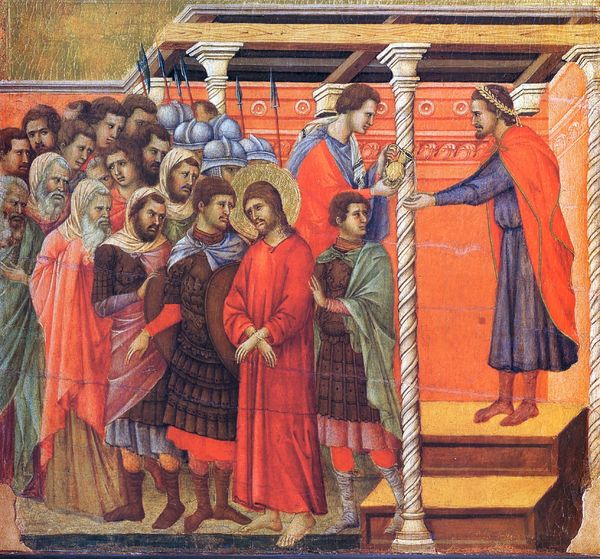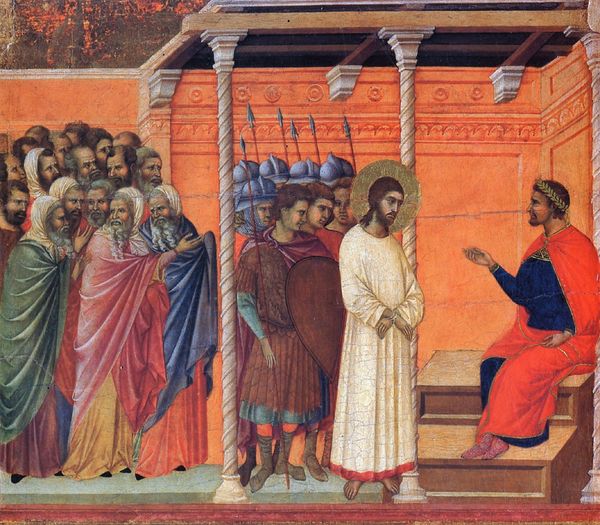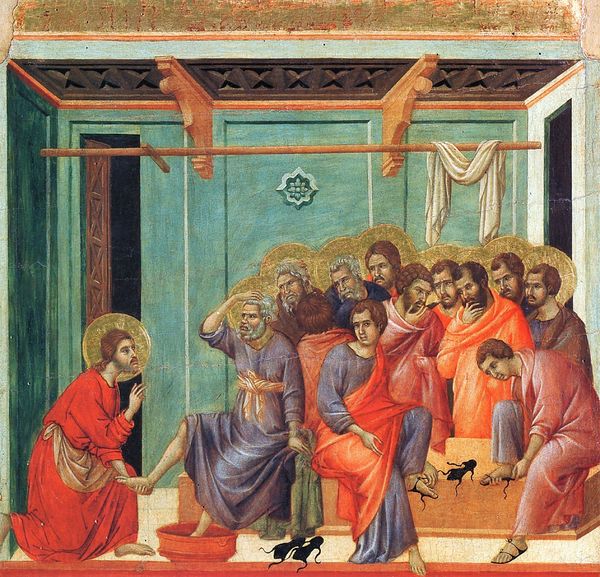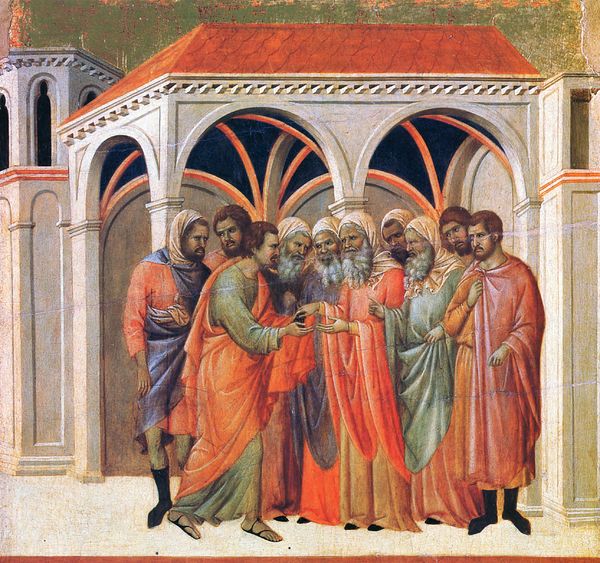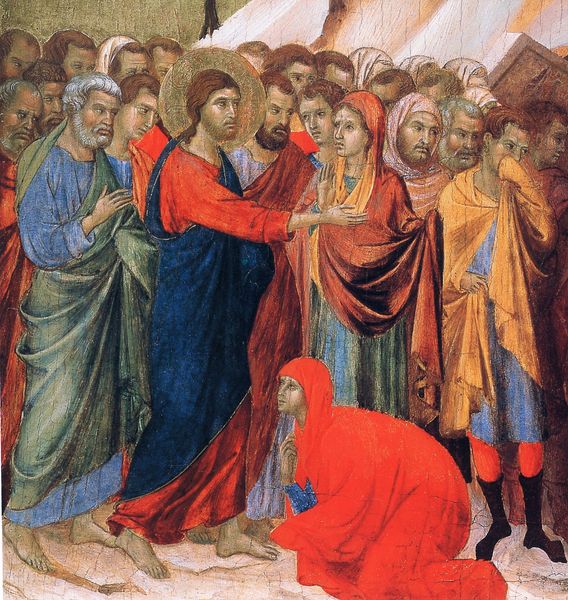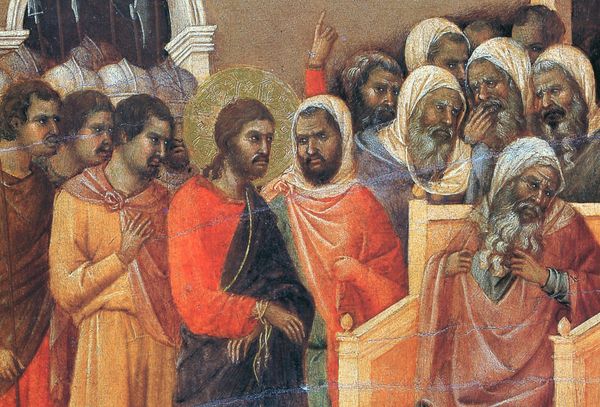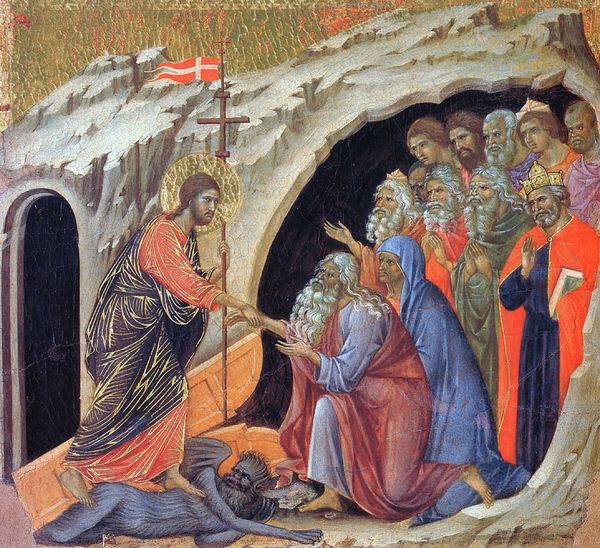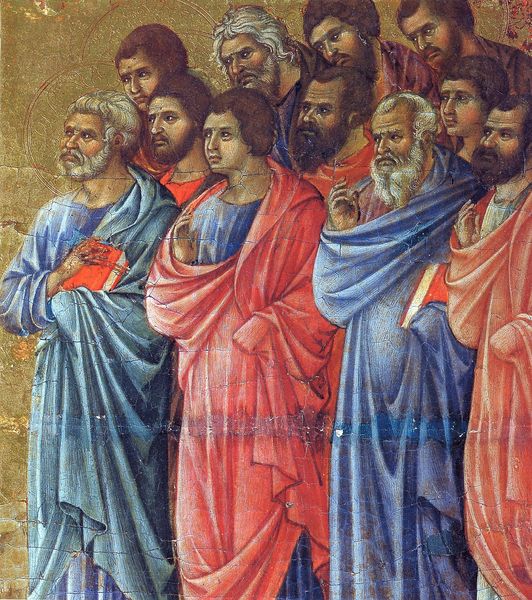
panel, tempera, painting, oil-paint
#
portrait
#
panel
#
narrative-art
#
tempera
#
painting
#
oil-paint
#
sienese-school
#
figuration
#
oil painting
#
soldier
#
christianity
#
history-painting
#
italian-renaissance
#
christ
Copyright: Public domain
Duccio painted this panel of "Christ before Caiaphas" around 1308-1311 in Siena, Italy, as part of a larger altarpiece called the Maesta. Looking at the painting, we see the moment when Christ is brought before Caiaphas, the high priest, to be questioned. The scene depicts a clash between divine authority and earthly power. What interests me is how Duccio uses visual cues to portray this conflict. The figures are arranged to emphasize the power dynamic with Caiaphas enthroned and Christ standing before him. Consider the architecture, which is rendered in a way that recalls the architecture of the palaces where the Sienese government operated. What does this choice say about Duccio's perception of religious authority in relation to civic life? The art historian can turn to documents such as civic records, religious treatises, and contemporary accounts to gain a deeper insight into the painting. Art historical understanding reminds us that the meaning of art is never fixed.
Comments
No comments
Be the first to comment and join the conversation on the ultimate creative platform.
